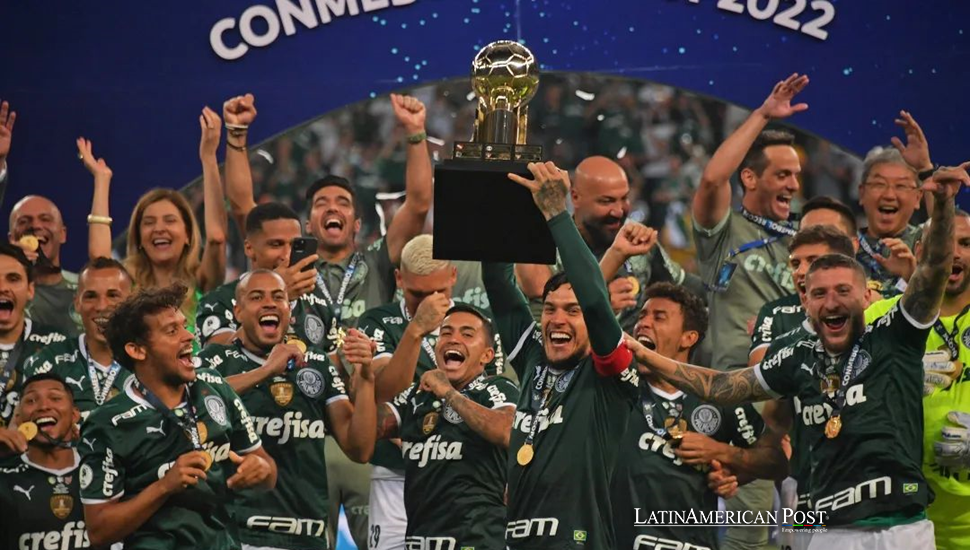Brazilian Soccer Prize Money Leaves South America Struggling

The impact of Brazil’s remarkably high prize money in soccer is not just a distant concern; it’s a pressing issue that is reshaping the South American club scene. Traditional powerhouses in Argentina, Uruguay, and Colombia are not just falling behind; they are struggling to keep up. The gap is not just widening; it’s becoming insurmountable, prompting a reevaluation of strategies.
Brazil’s Financial Muscle
The disparity in prize money across South American soccer is staggering. In Brazil, the winner of the Paulista Championship—a state league—earns $4 million, while Argentina’s national cup champion takes home less than $70,000. That’s before even considering the Brazilian national league and cup, where champions earn $10 million and $18 million, respectively.
Argentina, often seen as Brazil’s closest rival, gives only $500,000 to its league winners. This big difference in money leads to better performance on the field. Brazilian clubs usually beat their neighbors in continental competitions. Brazilian clubs excel in these tournaments.
The Copa Libertadores, South America’s top club tournament, has become a stage for Brazilian teams. This year marks the sixth consecutive Brazilian champion, with two clubs from the country battling for supremacy in the final. The days when clubs like Boca Juniors, River Plate, or even Paraguay’s Olimpia where dominant forces seem like a distant memory.
Brazil has economic and population advantages. These benefits contribute to its dominance. That local tournament prize money is the real revolution. It’s money that allows Brazilian clubs to rake in the cash. They bring in top talent, and clubs keep their best players. They put money into the infrastructure. Other continents don’t catch up with Brazil.
The Ripple Effect on Brazil’s Wealth
The effects of Brazil’s financial superiority are felt far beyond its borders. Mid-table Brazilian clubs are now outpacing even the top teams from other countries in South America. This year, teams from Brazil eliminated Argentine powerhouses River Plate and Boca Juniors from continental tournaments.
The lack of parity is wider than Brazil versus Argentina. In many South American countries, prize money for league winners is nonexistent, leaving clubs with little incentive—or resources—to compete on a continental level.
Brazil’s wealth doesn’t just fuel domestic success; it creates a cycle of dominance in continental competitions. Winning the Copa Libertadores provides even more prize money, sponsorship deals, and global fame. This success deepens Brazilian clubs’ position as the region’s top teams. Other clubs feel puzzled about how to close this gap.
But is catching up possible? Brazil has natural benefits, such as a vast economy and a large population. These advantages create a structural financial imbalance. Domestic prize money in Brazil turns to catch up into a dream that feels almost impossible.
The Premier League of South America
Brazilian soccer is so dominant that one compares it to the European Premier League. English clubs transformed international soccer through money. Brazil is changing South America’s soccer. There is an effect of the Premier League all over the world. Brazil’s influence mainly impacts its continent. And this only adds to Brazil’s effect.
Critics argue that Brazil’s wealth is killing the competitive spirit of South American soccer. A steady stream of Brazilian success has replaced the variety and unpredictability that once defined tournaments like the Copa Libertadores. Fans of other nations wonder whether their clubs will ever have a realistic chance of competing again.
However, the argument that Brazil is “killing” South American soccer misses an important point: this dominance is not Brazil’s fault. Brazilian clubs have capitalized on the resources available to them. They are not to blame for the lack of investment or poor financial planning in neighboring countries.
Instead of criticizing Brazil for taking the lead, others should act. Neighboring federations and clubs are responsible for finding new and creative ways to balance competition. This could involve innovative approaches to financial management, new revenue streams such as digital media rights, or collaborative regional initiatives to develop and retain talent.
A Call for Innovation
While the financial gap may seem daunting, it’s not an impossible hurdle. South American clubs and federations have the potential to innovate and find new revenue streams. By securing better sponsorship deals, broadcast rights, and improving financial management, they can bridge the gap and compete on a more level playing field.
Argentina’s league structure might change, which will probably bring better sponsorships and broadcast deals. Uruguay and Colombia may focus on training young players. These programs will create new talent, like in Brazil. Regional teamwork might help smaller countries compete well.
Continental organizations like CONMEBOL play a role. Changing how they share Copa Libertadores and Copa Sudamericana prize money could help more. Clubs from smaller countries might get a fair share, which would give them a better chance to reinvest and compete.
The solution is for Brazil to continue. Neighboring countries need to speed up. South American soccer is full of excitement and rivalry. Soccer here has thrilling matches and fierce competition. Every nation must keep these rivalries meaningful.
Also read : Overlooked Gun Flow from U.S. Fuels Violence Across Latin America
Brazilian prize money has significantly widened the gap in South American soccer. However, this is not the end of the story. Argentina, Uruguay, Colombia, and others are facing a significant challenge. If they do not adapt and find new ways to compete, the region’s beloved tournaments could lose the balance and unpredictability that once made them great. The ball is in their court, and the time to act is now.




